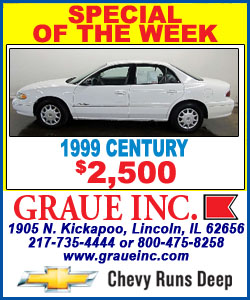 To begin the upcoming projects, Colgan said, would start
with a strategic plan. He said it was necessary to have a vision and
goals so that as the city moves forward, it is following a plan
that will actually help the city and remain cohesive, beginning to
end. To begin the upcoming projects, Colgan said, would start
with a strategic plan. He said it was necessary to have a vision and
goals so that as the city moves forward, it is following a plan
that will actually help the city and remain cohesive, beginning to
end.The first part is creating the vision for the future. Colgan
presented questions to the steering committee and also to the first
workshop on Monday. From this a vision statement was created, which
said:
"Downtown revitalization of downtown Lincoln should enhance the
quality of life in Lincoln in order to drive population growth and
economic development throughout the community."
Colegan explained what the vision meant, saying: "In other words,
quality of life. Downtown needs to drive higher quality of life
within the city and the region for the purpose of new jobs, new
growth being the ultimate goals as part of this vision.
"So downtown needs to be an engine, and that engine is fueled by
the fact that it is a compelling place that has increased in
diversified shopping and dining opportunities, has increased
entertainment options, and is an environment that fosters additional
special events more than just what you have now."
Colgan said if this can be accomplished, it will hopefully drive
new employment opportunities and will also fuel the local tax base.

Colgan then moved on to setting goals. He said there is a
preliminary list of goals, but more need to be added to make it
complete.
The goals included adding more night and weekend entertainment
venues.
Another goal is to establish more shopping opportunities through
small retailers. He said there could be a place in the downtown area
for a series of unique specialty shops.
He said downtown retail trends have changed over the years, and
what the city might hope for is specialty shops that offer items
that cannot be found in other areas or in big-box stores.
Colgan said there is a lot of empty space in the downtown area
and a lot of opportunity for new business. He also noted there is a
lot of upper-level space that could be renovated to living space or
even office spaces.
Colgan moved on to the next stage of the plan: business
development. He said the city needed to examine their assets and
recognize their hurdles.
One of the best economic strategies for downtowns to build off of
is what they already have. Colgan said he asked workshop
participants to list the assets of the downtown area.
He said there were a variety of answers, and what he was showing
in his slideshow was only a portion.
Top on the list of downtown assets was the local grocery store:
Lincoln IGA. Colgan said downtown grocery stores are few and far
between in towns the size of Lincoln these days, so it is clearly an
asset.

Other items on the list were a cohesive historic
fabric, inexpensive real estate, engaged property owners, train
station and the development of high-speed rail, Lincoln Theater,
unique shops, walkable, and having focal point: the Logan County
Courthouse.
Colgan said the next question was: What are the hurdles?
These are the things that would stunt growth in the downtown area.
The list included businesses not accepting credit cards;
perception of safety, especially at night and near the bar areas;
lighting; uneven sidewalks; quality of commercial space to rent;
several buildings in disrepair; inconsistent property conditions --
one building looks great and the one next to it may be falling down;
and the last hurdle was an overall resistance to change.
Colgan said this was important and difficult. There are people,
no matter where you are, who resist change.
[to top of second column] |

Colgan moved on to the last section he would present: the work being
done on a land-use plan.
He began by saying that for a city with a population of only
15,000, the downtown area of Lincoln is really very large.
He noted that the area around the square is where the majority of
the retail businesses currently are, but there is also the area
along the rail line. He said in most towns there is usually either a
downtown square or a business district along a main street or rail
line. Lincoln has both and needs to address both areas.
With the coming of high-speed rail, the businesses on Chicago and
Sangamon streets are going to play a bigger role in attracting
visitors. But, there also needs to be a better way to draw them to
the downtown square.
Colgan said that as he looked for a connector, Pulaski Street
seemed to have a great deal of potential. He noted there are already
food establishments and other business along the street. In
addition, it has less vehicular traffic.
He indicated that one possible plan could be to widen the
sidewalk area along Pulaski and make it the connection to the
downtown square.
He said there were also opportunities to develop new business
opportunities in the areas around both Scully and Latham parks.
Looking at other land-use projects that could attract more people
to the downtown area, Colgan mentioned perhaps having a space for a
hotel. He noted Lincoln has had a downtown hotel in the past, and it
might benefit from having one again.
Something else that might attract more people could be locating
the YMCA in the downtown area. And finally, he said creating green
spaces and seating areas in the downtown area would be an asset to
the city.

When Colgan finished speaking, Darren Forgy took the podium once
again. In the final segment of the Tuesday night meeting, Forgy
presented a slideshow of improvements that have been suggested by
landscape architect Kent Massie.
___
In the final segment of this series, Forgy will go through new
landscape design suggestions for Latham and Scully parks as well as
the Logan County Courthouse lawn.
[By NILA SMITH]
Past related articles

 |